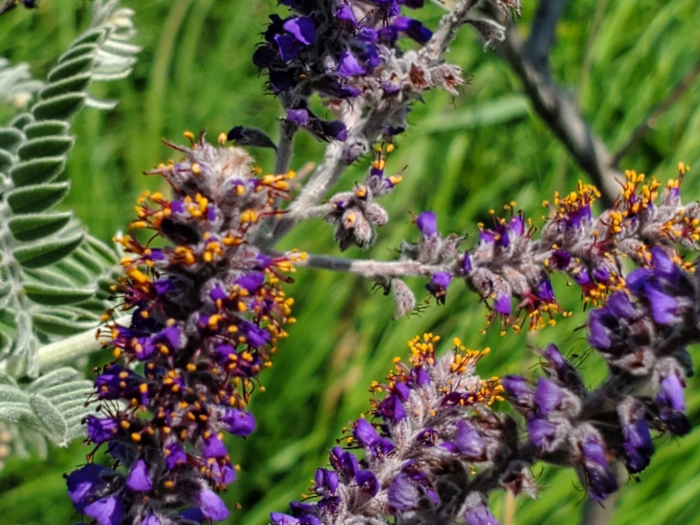Leadplant
(Amorpha canescens)
Leadplant (Amorpha canescens)
/
/

Samuel A. Schmid
CC BY 4.0




















































Estimated Native Range
Summary
Leadplant is valued for its drought tolerance and ability to fix nitrogen in the soil, enhancing fertility. It is used in native plant gardens, prairie restorations, and for erosion control due to its deep root system. It is also appreciated for its ornamental qualities, including its silver foliage and persistent flowering spikes. In cultivation, leadplant thrives in full sun and requires minimal water once established, making it low-maintenance. It is adaptable to a range of soil types, provided they are well-drained. While it is not known for serious pest or disease issues, overwatering or poor drainage can lead to root rot.CC BY-SA 4.0
Plant Description
- Plant Type: Subshrub, Shrub
- Height: 1-3 feet
- Width: 2-2.5 feet
- Growth Rate: Moderate
- Flower Color: Purple
- Flowering Season: Summer
- Leaf Retention: Deciduous
Growth Requirements
- Sun: Full Sun
- Water: Low
- Drainage: Fast, Medium
Common Uses
Bank Stabilization, Bee Garden, Bird Garden, Border Plant, Butterfly Garden, Deer Resistant, Drought Tolerant, Erosion Control, Fire Resistant, Hummingbird Garden, Low Maintenance, Rock Garden, Salt Tolerant, Showy Flowers, Street Planting
Natural Habitat
Native to North American prairies, glades, and open woodlands
Other Names
Common Names: Downy False Indigo, Downy Indigo-Bush, Leadplant Amorpha, Wild Tea, Prarie Shoestring, Buffalo Bellows, Buisson À Plomb, Faux-Indigo Blanchissant, Grå Segelbuske, 털족제비싸리
Scientific Names: , Amorpha canescens, Amorpha brachycarpa, Amorpha canescens var. glabrata, Amorpha canescens f. canescens, Amorpha canescens f. glabrata, Amorpha canescens var. typica, Amorpha canescens f. glabrescens, Amorpha canescens var. leptostachya, Amorpha roemeriana f. glabrata,
GBIF Accepted Name: Amorpha canescens Pursh